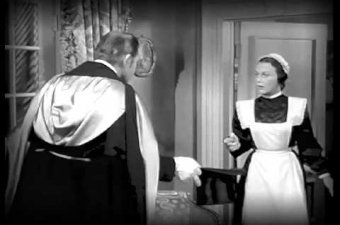Gallatin Street
92 French Market PlaceNew Orleans LA 70116
Content provided by the New Orleans Jazz Museum, adapted from a tour curated by Jessica Anne Dauterive, Greg Lambousy, William Jones, Sean Simonson, and Ellie Ginsburg for NewOrleansHistorical.org.
A small, two-block stretch called Gallatin Street, now called French Market Place, was once the headquarters of vice in New Orleans. A visitor to the street in 1873 described the scene for the Times-Picayune:
Gallatin street is wet and slippery, it is dimly lighted, for rows of tall houses with battered, broken shutters, and windows unlighted, look down on the stones below. Gallatin street has a puddle here and there on the sidewalk, but these cannot be seen, as the moon has not come yet over the edge of the tall, seemingly untenanted houses by which the street passes. But the houses with the wet bricks and the dark broken windows are inhabited by hundreds of human beings. This is one of the haunts of poverty. Squalor and misery are sleeping above in chambers so dark and damp as the cold pavestones below.
We reach the doorway of a large room, whence the music proceeds. We pause, look in, and a sailor with a blue shirt and trousers and a blue flat cap on the back of his head, half grunts, half hiccoughs as he says, ‘Sail in if yer after fun an’ frolickin’.’
Although arguably on the decline by the time this article was published, Gallatin Street sheltered some of the most dangerous criminals, street gangs, and con men of the mid-1800s in New Orleans. The port of New Orleans during this time was booming, keeping a constant flow of men and women through Gallatin Street’s infamous barrooms, dance houses, and brothels. There was rarely a fee to enter, but men were encouraged to buy a drink for their dance partner at the end of each dance, keeping the bartenders happy and the patrons “loose.”
Prostitution, said to be the second most profitable business in town, proliferated on Gallatin Street. While women were often victims of violent crime here, some were also perpetrators. Mary Jane Jackson, better known as Bricktop, who worked at Archy Murphy’s brothel, compiled a record of assaults throughout New Orleans. She was eventually deemed too rough for even one of the roughest dance houses on Gallatin Street.
In 1897, City Ordinance 13032 created the boundaries of Storyville, a red-light district, where musicians such as Tony Jackson and Jelly Roll Morton would go on to provide the nightly soundtrack. The dance houses and brothels on Gallatin Street, outside of Storyville’s limits, became illegal.
In the 1920s, the writer Lyle Saxon described Gallatin Street as a quiet, almost haunted, area, reserved for vendors at the nearby markets. Once one of the most dangerous streets in the country, in the middle of one of the South’s economic centers, Gallatin Street’s former tenements and vice dens were demolished to expand the French Market in 1935.
Today, live music continues on this site at events including the French Quarter Festival and the Creole Tomato Festival.
Videos

This recording of "Gallatin Street Grind" was released on G.H.B. Records, a label named for George H. Buck which operates at 61 French Market Place, formerly Gallatin Street.
Video posted by The Orchard Enterprises.
This recording of "Gallatin Street Grind" was released on G.H.B. Records, a label named for George H. Buck which operates at 61 French Market Place, formerly Gallatin Street.

"Yancy Derringer," which ran on CBS from 1958 - 1959, was set in postbellum New Orleans amid the kind of crime and intrigue Gallatin Street was famous for.
Video posted by Gloria Kirk.
"Yancy Derringer," which ran on CBS from 1958 - 1959, was set in postbellum New Orleans amid the kind of crime and intrigue Gallatin Street was famous for.
Images

















